- SilverWare
- Wooden Furniture & Craft
- Wooden Nautical Gift
- Wooden Block
- Wooden Rehal[Book Reading]
- Wooden Table Corner
- Wooden Incense Stick Burner
- Wooden Cutlery & Cigar Pipe
- Wooden Almira
- Wooden Walking Stick & Stand
- Wooden New Development Furniture
- Wooden Lamp
- Wooden Dinning Set
- Wooden Chess & Game Box
- Wooden Chess
- Wooden Mango Wood European Style Furniture
- Wooden Extension
- Wooden Drawer
- Wooden Meena Work Antique
- Wooden Teak Wood European Style Furniture
- Wooden bed side
- Wooden Photo Frame
- Wooden binary table
- wooden bench
- Wooden Office Desk
- Wooden Jewellery
- Wooden Swing
- wooden drawer chest
- Wooden Tvc
- Wooden Stationary
- Wooden Table Piller
- wooden wine bar
- Wooden Mislinius Furniture
- Wooden Pen Holder & Pen Box
- Wooden Box
- wooden chair
- Wooden Screen
- Wooden House Hold Product
- Wooden Ash Tray
- Wooden Side Board
- Wooden Mirror Frame
- Wooden Coaster
- Wooden Candle Stand
- Wooden Table Octangle
- ALUMINIUM
- Musical Instrument
- Stallone Pig Bristle
- Rugs & Carpet
- Stone Product
- IRON WARE
- Zinc Oxide
- GUAR GUM
- Brass Nautical & Marine Re-Production Instrument
- Brass Clinometer
- Brass Abney Level
- Brass candle stand
- Brass Ship Clock
- Sailers Wheel
- Brass Microscope
- Brass Flower Base
- Brass Ship Telegraph
- Brass Ship Anchor
- Brass Porthol Window
- Brass Photo Frame
- Brass Sextant
- Brass Mix Nautical Gift
- Brass Weather Instrument
- Brass Ashtray
- Brass Sand Timer
- Brass Boat Horn
- Brass Ship Bell
- BRASS CHRISTMAS DECORATIVE
- Brass Theodolite
- Brass Divider
- Brass Vernier Caliper
- Brass Kitchenware
- Brass Surveying Level
- Brass Nautical Key Chain
- Brass Pully [Reel]
- Brass Napkin Ring
- Brass Diving Helmet
- Brass Magnifier
- Brass Rain Guage
- Brass Bottle Opener
- Brass Ship Lamp
- Brass Compass
- Brass Lamp
- Brass T Light Holder
- Brass Globe
- Brass Porthol Mirror
- Brass Binoculers
- Brass Search Light
- BrassWare New Range
- Brass Flag Hook
- Brass Measurement Tape
- Brass Telescope
- Brass Gong
- Medieval Armoury
- Bronze Statue
- Home
- About us
- ShopNew

50% OFF FOR
New collection
Free shipping & free returns on dresses

Hot week
Discover the selection
Shipping worldwide only 5 days - Executive Member
- Contact us
- SilverWare
- Wooden Furniture & Craft
- Wooden Nautical Gift
- Wooden Block
- Wooden Rehal[Book Reading]
- Wooden Table Corner
- Wooden Incense Stick Burner
- Wooden Cutlery & Cigar Pipe
- Wooden Almira
- Wooden Walking Stick & Stand
- Wooden New Development Furniture
- Wooden Lamp
- Wooden Dinning Set
- Wooden Chess & Game Box
- Wooden Chess
- Wooden Mango Wood European Style Furniture
- Wooden Extension
- Wooden Drawer
- Wooden Meena Work Antique
- Wooden Teak Wood European Style Furniture
- Wooden bed side
- Wooden Photo Frame
- Wooden binary table
- wooden bench
- Wooden Office Desk
- Wooden Jewellery
- Wooden Swing
- wooden drawer chest
- Wooden Tvc
- Wooden Stationary
- Wooden Table Piller
- wooden wine bar
- Wooden Mislinius Furniture
- Wooden Pen Holder & Pen Box
- Wooden Box
- wooden chair
- Wooden Screen
- Wooden House Hold Product
- Wooden Ash Tray
- Wooden Side Board
- Wooden Mirror Frame
- Wooden Coaster
- Wooden Candle Stand
- Wooden Table Octangle
- ALUMINIUM
- Musical Instrument
- Stallone Pig Bristle
- Rugs & Carpet
- Stone Product
- IRON WARE
- Zinc Oxide
- GUAR GUM
- Brass Nautical & Marine Re-Production Instrument
- Brass Clinometer
- Brass Abney Level
- Brass candle stand
- Brass Ship Clock
- Sailers Wheel
- Brass Microscope
- Brass Flower Base
- Brass Ship Telegraph
- Brass Ship Anchor
- Brass Porthol Window
- Brass Photo Frame
- Brass Sextant
- Brass Mix Nautical Gift
- Brass Weather Instrument
- Brass Ashtray
- Brass Sand Timer
- Brass Boat Horn
- Brass Ship Bell
- BRASS CHRISTMAS DECORATIVE
- Brass Theodolite
- Brass Divider
- Brass Vernier Caliper
- Brass Kitchenware
- Brass Surveying Level
- Brass Nautical Key Chain
- Brass Pully [Reel]
- Brass Napkin Ring
- Brass Diving Helmet
- Brass Magnifier
- Brass Rain Guage
- Brass Bottle Opener
- Brass Ship Lamp
- Brass Compass
- Brass Lamp
- Brass T Light Holder
- Brass Globe
- Brass Porthol Mirror
- Brass Binoculers
- Brass Search Light
- BrassWare New Range
- Brass Flag Hook
- Brass Measurement Tape
- Brass Telescope
- Brass Gong
- Medieval Armoury
- Bronze Statue
SA0312 GOTHIC SUITS OF ARMOUR
GOTHIC SUITS OF ARMOUR
GOTHIC SUITS OF ARMOUR
Gothic plate armour (German: Gotischer Plattenpanzer) is the term for the type of
steel plate armour made in the Holy Roman Empire during the 15th century.While
the term “Gothic” in art history covers the 12th to 15th centuries, Gothic plate
armour develops only during 1420–1440s, when the technological development of
armour reached the stage where full plate armour (including movable joints) was
made, and national styles of “white armour” began to emerge, specifically German
(“Gothic”) and Italian. Centers of armour production in the period included
Augsburg, Nuremberg and Landshut.The Gothic style of plate armour peaked in
type known as Maximilian armour, produced during 1515–1525. By this time, full
plate armour had become mostly limited to elaborate “parade armour” not
intended for battlefield use, while for practical use, half-armour (Halbharnisch)
became increasingly common, eventually giving rise to the early modern cuirass.In
to the classification due to Oakeshott (1980), High Gothic armour was worn during
the later 15th century, a transitional type called Schott-Sonnenberg style was
current during c. 1500 to 1515, and Maximilian armour proper during 1515 to
1525.Gothic armour was often combined with a Gothic sallet, which included long
and sharp rear-plate that protected the back of the neck and head. Maximilian
armour of the early 16th century is characterized by rounder and more curved
forms, and their ridges were narrower, parallel to each other and covered the
entire armour.
Methods of single combat in this type of armour are treated in the German fencing
manuals of the period, under the term Harnischfechten (“armoured combat”).
Related products
Copyright © STALLONE OVERSEAS PVT. LTD. All rights reserved.
- Home
- About us
- ShopNew

50% OFF FOR
New collection
Free shipping & free returns on dresses

Hot week
Discover the selection
Shipping worldwide only 5 days - Executive Member
- Contact us




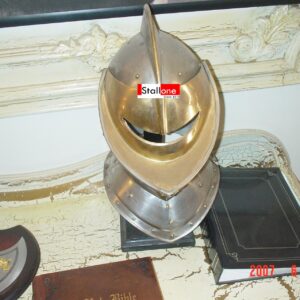
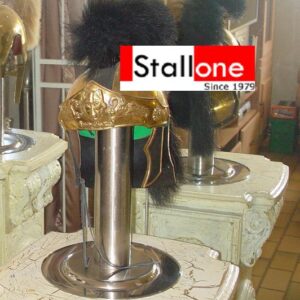
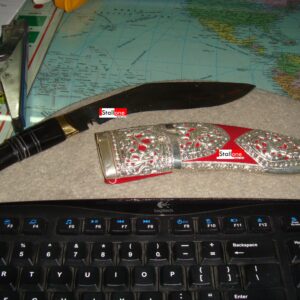
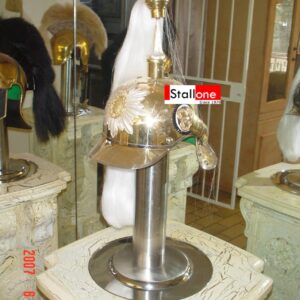
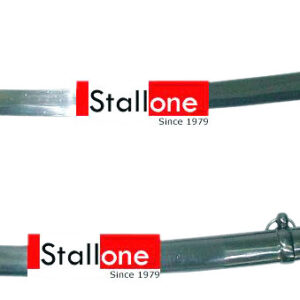
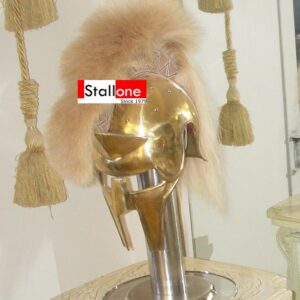
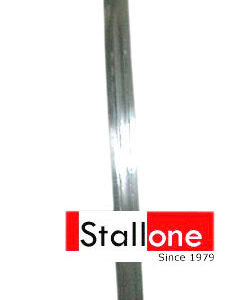
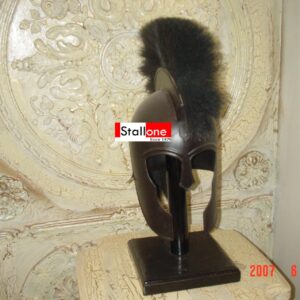
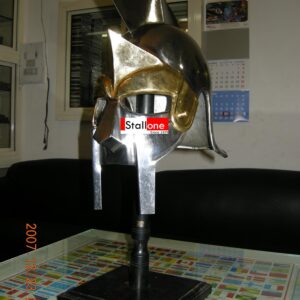
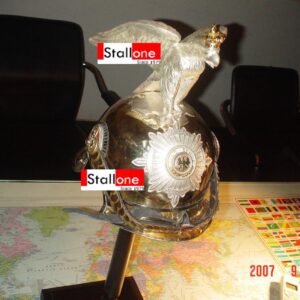
Reviews
There are no reviews yet.